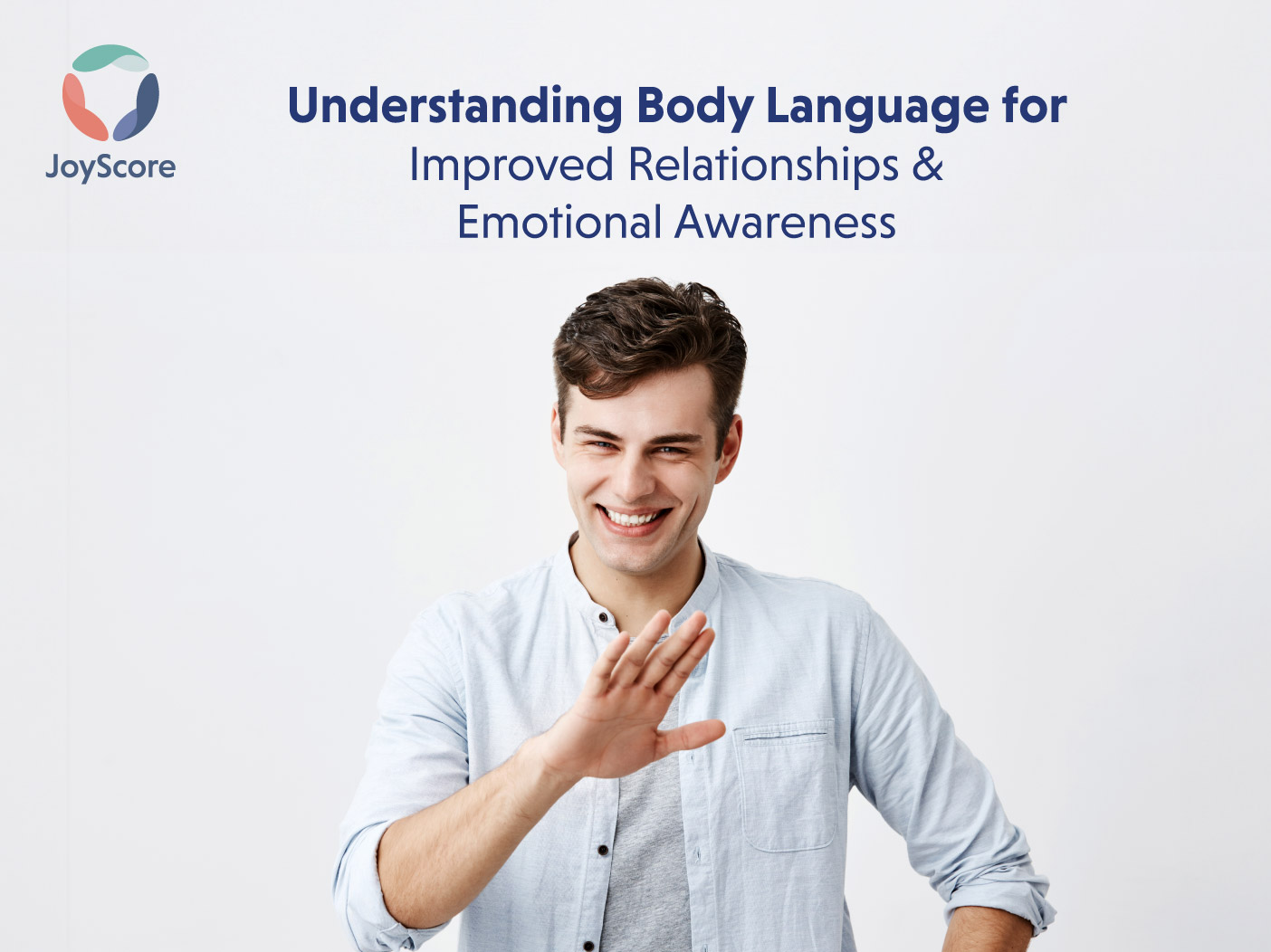In today’s digital age, where most communication happens behind a screen, it’s easy to forget the significance of nonverbal cues in our interactions. Understanding body language is essential to enhance emotional awareness in relationships greatly. It’s like cracking a secret code that reveals what someone feels or thinks beyond their words.
So let’s uncover the secrets of body language and unlock a new level of emotional intelligence in our relationships. It’s time to crack the code and build stronger bonds through understanding.
What is Body language?
Body language encompasses a range of subtle cues, from facial expressions and gestures to posture and eye contact, each carrying its hidden meaning. By learning to decode these signals, we can navigate social situations with greater empathy, build stronger connections, and foster healthier relationships.
Science Behind Body Language
The scientific basis of body language lies in the intricate workings of the human brain. Psychology and neuroscience have delved into how our brains interpret non-verbal cues, revealing the intricate dance between emotions and body language. Understanding this connection opens up a world of possibilities for improving interpersonal relationships.
Benefits of Understanding Body Language
Improved Communication:
Enhanced accuracy in conveying emotions and reduced misunderstandings are natural byproducts of mastering body language. By aligning verbal and non-verbal messages, communication becomes more authentic and effective.
Emotional Awareness:
Developing a deeper understanding of one’s own emotions and recognising the emotions of others leads to heightened emotional intelligence. This self-awareness lays the foundation for stronger and more empathetic connections.
Building Trust and Connection:
Positive body language is a powerful tool for building trust. The way we carry ourselves and respond to others’ cues can significantly impact the quality of our relationships. Building trust through non-verbal cues fosters deeper connections.
Conflict Resolution:
Body language plays a crucial role in navigating conflicts. By understanding and using non-verbal cues effectively, we can de-escalate tense situations and facilitate smoother communication during difficult conversations.

Understanding Non-Verbal Communication Cues
Body language is a complex system of non-verbal cues that can vary across cultures and individuals. To become proficient in decoding body language, it’s important to familiarise yourself with the different types of signals and their meanings.
1. Context matters
Interpret facial expressions in the context in which they occur, as a smile may not always indicate happiness but can also convey politeness or nervousness.
2. Gestures Speak Loudly
Be attentive to hand movements, as they can reveal underlying emotions or intentions, such as aggression or sincerity.
3. Posture Tells a Story:
Consider a person’s posture; a confident and open posture may signal assertiveness, while closed or slouched positions may indicate discomfort or defensiveness.
4. Eyes Betray Emotions:
Pay attention to eye contact, which can convey interest, honesty, or discomfort. Cultural norms and individual preferences play a role in interpreting eye contact.
5. Cluster of Cues:
Remember that it’s crucial to analyze a combination of cues, as individual gestures or expressions may have different meanings when considered together.

How Body Language Affects Emotional Awareness
Crucial Role: Body language is key for emotional awareness and empathy.
Observation and Interpretation: Non-verbal cues help understand others’ emotions and needs.
Example: Fidgeting, avoiding eye contact, and tense posture may signal anxiety or discomfort.
Adaptability: Recognising cues allows for adjusting communication for compassion and support.
Impact on Emotional State: Adopting confident postures positively influences self-confidence and reduces stress.
Conscious Adjustment: By consciously adjusting body language, one can enhance emotional well-being and relationship dynamics.
The Role of Body Language in Relationships
In the intricate dance of human connection, body language takes centre stage, offering a nuanced layer to verbal communication. Here’s a brief look at its significance:
1. Non-verbal Communication Dominance
Research highlights that a substantial portion of communication is conveyed through body language, surpassing the impact of words alone.
2. Insight into Thoughts and Emotions:
Gestures, facial expressions, and posture serve as windows into a person’s true thoughts and emotions, providing valuable insights.
3. Building Meaningful Relationships:
Understanding and interpreting body language is essential for connecting on a deeper level, responding to emotional needs, and building strong, meaningful relationships.
4. Enhanced Emotional Awareness:
Recognising non-verbal cues fosters emotional intelligence, enabling appropriate responses and strengthening interpersonal bonds.
Misinterpreting Body Language – Common Mistakes to Avoid
While body language can provide valuable insights, it’s important to be aware of common pitfalls and avoid jumping to conclusions based on isolated cues. Here are some common mistakes to avoid:
- Assuming universality: While some body language cues have universal meanings, many are influenced by culture, context, and individual differences. Avoid assuming that every gesture or expression holds the same meaning for everyone.
- Ignoring context: Body language should always be interpreted in the context of the situation and other cues. A single gesture or expression may have different meanings depending on the circumstances.
- Relying solely on one cue: Body language is a complex system that requires considering multiple cues and their interactions. Relying solely on one cue may lead to misinterpretation.
Conclusion
In conclusion, understanding body language is a powerful tool for anyone seeking to improve their relationships and emotional intelligence. By delving into the subtle art of non-verbal communication, we unlock the potential for deeper connections, effective communication, and a more harmonious social landscape. Integrate these insights into your daily interactions, and watch as your relationships flourish with newfound understanding and empathy.



